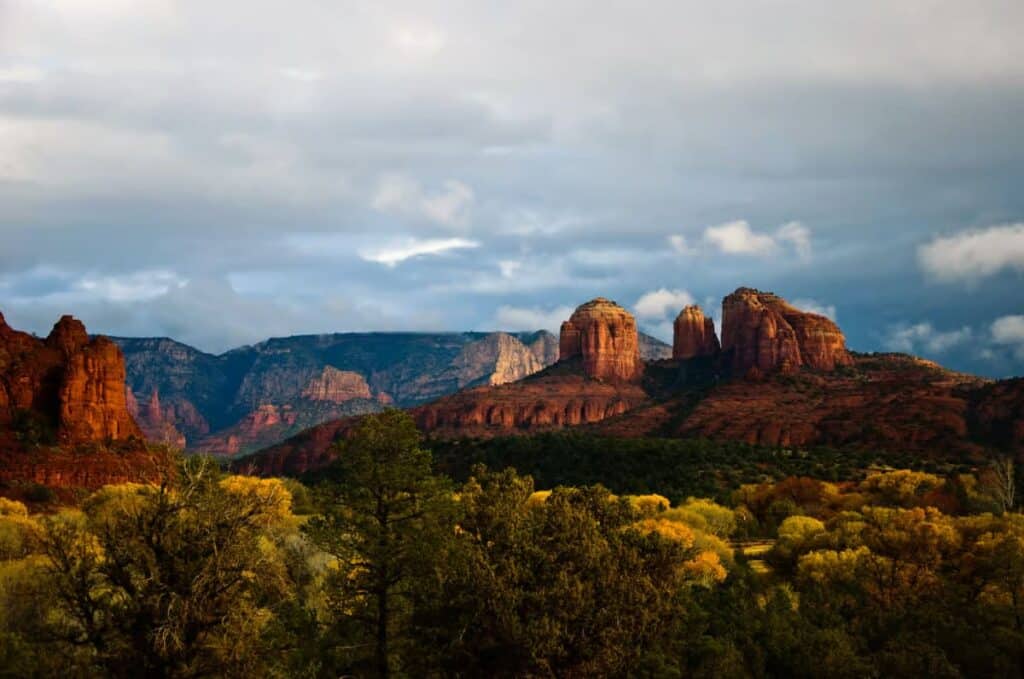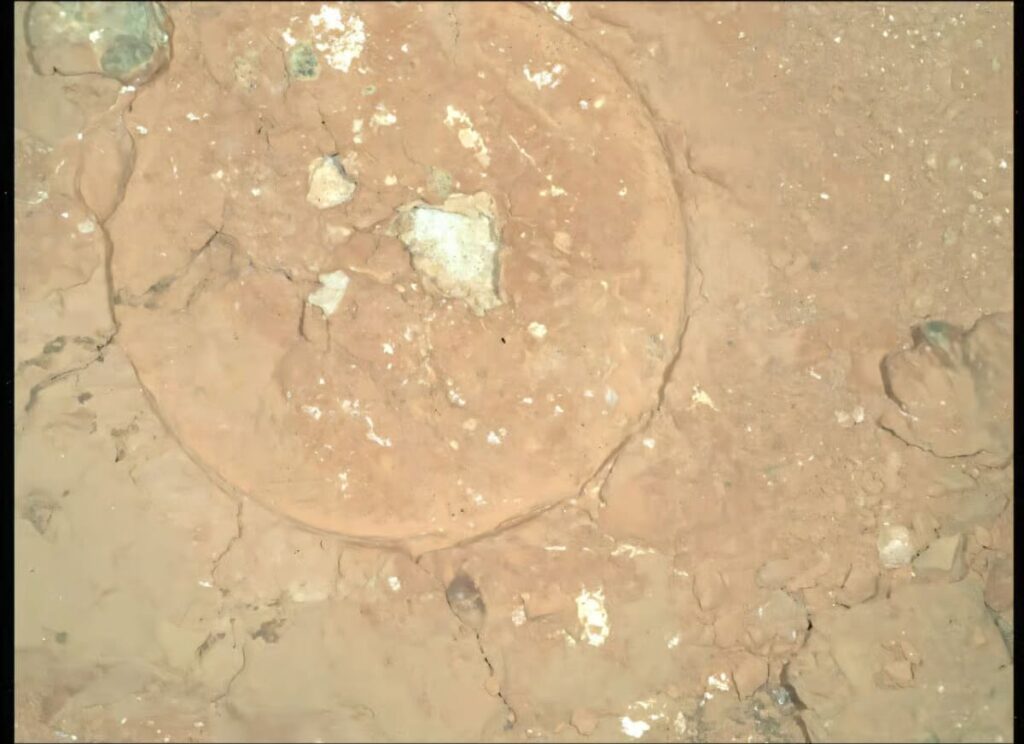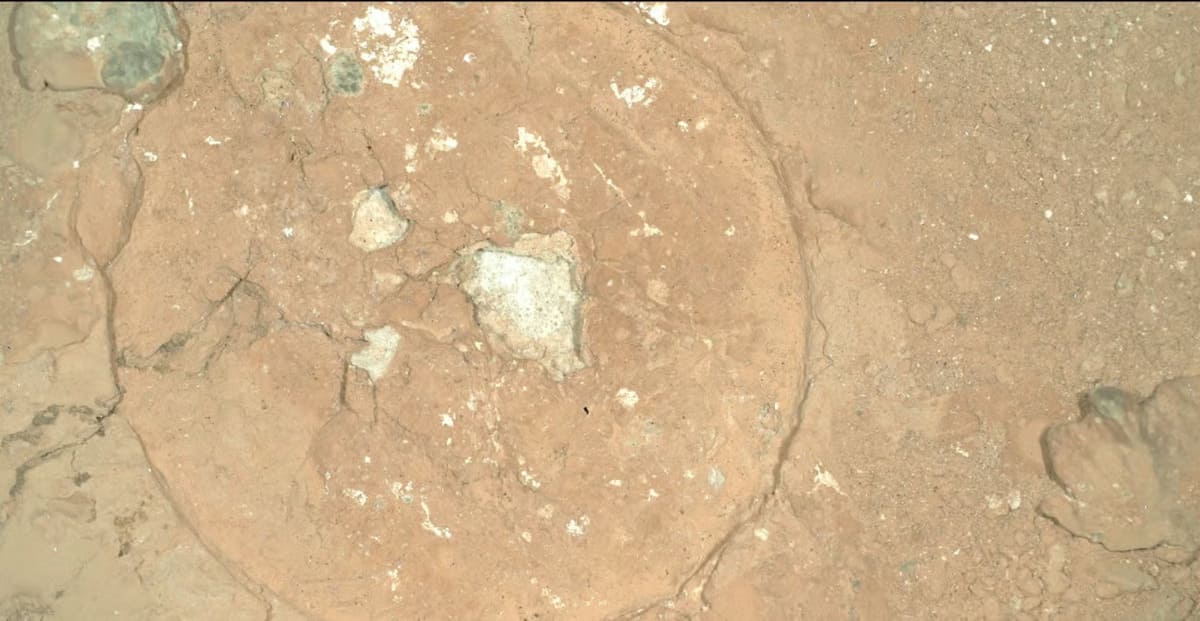What if a speck of green on a Martian rock was the first real hint that life once existed on the Red Planet? That’s the possibility scientists are cautiously entertaining, thanks to a surprising discovery by NASA’s Perseverance rover. No one can say for sure yet — but nothing rules it out either. In other words, there’s still hope.
Perseverance made the find during its climb up Jezero Crater, where it encountered a peculiar patch on a rock — tiny, green, and oddly intriguing. Even at that size, the spot has sparked renewed excitement over the possibility that Martian life may once have taken root.
On its way to the summit, the rover stopped at a location known as the “Serpentine Rapids,” a stretch littered with deep red rocks that quickly caught the attention of both scientists and the rover’s cameras. These types of rocks are no strangers to Earth. Known as “red beds,” they’re common in parts of Texas and Oklahoma — a familiar sight in classic American westerns. These are sedimentary rocks, made up of sandstone and limestone, their red hue a product of ferric oxides (Fe³⁺).

Red beds are a typical setting in American westerns. © Wendy from Pennsylvania, USA, Wikimedia Commons, CC BY-SA 2.0
A shade of green that hints at life
To better understand what it was seeing, Perseverance deployed its abrasion tool on a rock outcrop dubbed Wallace Butte. The goal was to scrape away the outer layer and reveal a fresh, unaltered surface underneath. What it uncovered was unexpected: splotches of white, black — and yes, green.
It’s those green marks that have scientists buzzing. On Earth, such patches in red beds usually show up when water seeps through loose sediment, triggering a chemical process that turns Fe³⁺ (oxidized iron) into Fe²⁺ — a reduced form of the element. And here’s the kicker: this type of iron reduction sometimes results from microbial activity, or from decaying organic matter.
That said, nature doesn’t always need life to do its work. The same transformation can also occur through purely chemical interactions — for instance, when sulfur reacts with iron. So, as fascinating as it is, this green isn’t an automatic sign of biology. But it is a compelling clue.

Photo taken by Perseverance of the abraded area at the Serpentine Rapids site. The abrasion is five centimeters in diameter. In the upper left corner, a small greenish spot two millimeters in diameter can be seen. The image was taken on August 19, 2024 (sol 1243). © NASA, JPL-Caltech
Still no smoking gun — but the hunt continues
So far, there’s no clear answer — but that doesn’t mean the search is over. To determine whether life played a role in forming these green spots, Perseverance would’ve needed to use its more advanced instruments, Sherlock and PIXL. Unfortunately, the rocky terrain at the site made it impossible for the rover to deploy them.
That leaves the mystery unsolved. Were the spots created by ancient microbes, or by non-living forces? No one knows — not yet. But there’s reason to stay optimistic. Perseverance still has a long path ahead on Mars, and chances are good that more thrilling discoveries await just over the next rise.

Morgane Gillard
Journalist
As a child, I dreamed of being a paleontologist, an astronaut, or a writer… and ultimately, my heart led me to geology. After years of studying to gain deep knowledge, I now share it with you, the readers of Futura!
Looking back, I realize that my passion for Earth and science in general started very early! My first spelunking expedition was at the age of 4, my first scuba dive at 7, fossil hunting all across France, nighttime outings to watch the stars… With a father who was a chemistry teacher and an avid cave diver, and a mother who was the first female commercial diver in France, my childhood was filled with adventure and discovery! One memory in particular stands out: observing the Hale-Bopp comet in 1997, in the middle of the night, standing in a field while my parents whispered the countdowns for the exposure times to photograph that strange celestial object lighting up the sky. That image is forever etched in my memory, a moment filled with a certain magic—and even today, I still get chills when I gaze up at the stars. Head in the stars, feet on the ground. It was probably during our travels in an old Volkswagen van, between Andalusia and the barren lands of the North Cape, that I discovered the incredible beauty of nature and the stunning diversity of landscapes our planet has to offer.
Discovering Earth and Its Inner Workings
After high school, pursuing scientific studies felt like a natural choice, so it came as no surprise when I enrolled at university for a full degree in Earth Sciences. But I struggled to stick to just one field. During my studies, I explored all areas of geoscience: from geodesy to electromagnetism, from mineralogy to field geology… I loved learning about Earth and its complexity, its beauty, its strength, and its fragility. So when I was offered the chance to start a PhD in geodynamics in 2011—studying the development of the Australian and Antarctic margins—I didn’t hesitate. More things to learn and discover!
One of the most fascinating aspects of geosciences is how you juggle both vast timescales and spatial scales. You never stay still—you’re constantly zooming in and out. In a single day, you might shift from looking at the oceanic crust to analyzing a tiny mineral. You might be discussing tectonic plate movements and then chemical interactions between minerals. What could be more exciting?
From Continent to Ocean: The Incredible Journey of a PhD
Over those three years, I gradually specialized in seismic interpretation. Like a detective, I learned to read those striped black-and-white images and reconstruct a story—the story of plate tectonics and the opening of an ocean. Specifically, I worked on the development of detachment faults in the continent-ocean transition zone and the sedimentary record they produce. I had the opportunity to present my work at many international conferences and built a strong scientific identity. Three years of hard work, amazing discoveries, and incredible encounters shaped me into who I am today. After defending my thesis in 2014, I completed several years of postdoctoral research with CNRS and in collaboration with oil companies interested in these increasingly strategic zones for petroleum exploration.
Science, Always and Forever
But… academia is demanding, requiring full-time commitment—something not always compatible with starting a family. So I made the tough decision to shift career paths and turned to scientific writing. It turned out to be a great choice, as it allows me to keep talking about science, especially geology. Working with Futura is a real opportunity because it lets me share the world of Earth Sciences—an often-overlooked field—with a broad audience. After all, what could be more important than understanding the planet we live on?

